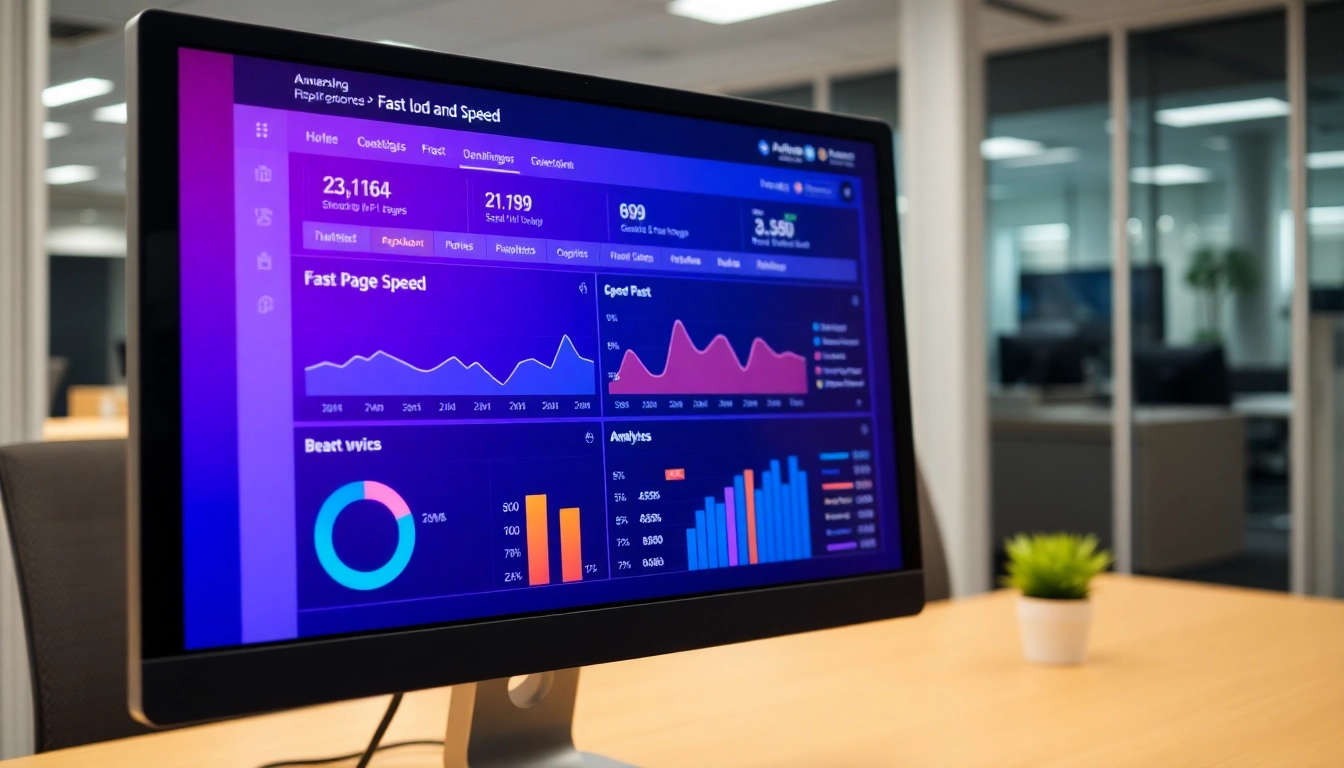Understanding the Critical Role of Page Load Speed in Your Website’s Success
In today’s fast-paced digital landscape, your website’s page load speed is more than just a technical metric — it’s a fundamental determinant of your online success. Visitors expect seamless experiences; a delay of even a few seconds can lead to increased bounce rates, diminished engagement, and lost revenue. According to Google, over half of mobile visitors abandon sites that take longer than 3 seconds to load. This underscores how crucial optimizing your website for speed is for user engagement and conversions.
Beyond user experience, page load speed significantly influences your search engine rankings. Search engines like Google factor site speed into their algorithms because they prioritize delivering the best possible results to users. A slow-loading website can hurt your SEO rankings, reduce visibility, and diminish organic traffic over time. If you’re aiming to attract more visitors, generate leads, or boost sales, understanding and enhancing your site’s load time must be at the core of your strategy.
To illustrate the importance, consider this: a comprehensive page load speed optimization can lead to faster site performance, improved SEO rankings, and higher conversion rates. Whether you’re running a small business, a personal blog, or a corporate ecommerce platform, focusing on the speed of your website can unlock significant growth potential.
Analyzing Current Page Speed Metrics and Benchmarking
Before implementing improvements, it’s essential to evaluate your current page speed performance objectively. Tools such as Google’s PageSpeed Insights, GTmetrix, and Pingdom offer detailed insights into your site’s loading times and identify bottlenecks. For example, Google recommends a page load time under 2-3 seconds for optimal user experience and SEO benefits.
When analyzing metrics, pay specific attention to the following:
- Time to First Byte (TTFB): How quickly the server responds to a request. A high TTFB indicates server or hosting issues.
- Largest Contentful Paint (LCP): How fast your main content loads. Aiming for under 2.5 seconds is ideal.
- Cumulative Layout Shift (CLS): Ensures visual stability during load, enhancing user experience.
Benchmark your current performance against industry standards. If your website currently has a page load time of over 14 seconds, as in some cases, this is a glaring issue that demands immediate attention. Such delays hugely impact user retention and SEO rankings, especially on mobile devices where loading times tend to be longer.
Effective Techniques to Boost Your Page Load Speed
Optimizing Images and Media Files
One of the most significant speed hindrances is oversized or unoptimized images. Use modern formats like WebP, which offer superior compression without sacrificing quality. Employ image compression tools and plugins that automatically optimize media files upon upload, especially if you’re on WordPress. Lazy loading images ensures that only visible content loads initially, drastically reducing initial load times.
Implementing Caching and Compression Plugins on WordPress
Caching reduces server load and improves response times by storing static versions of your pages. Popular WordPress caching plugins such as W3 Total Cache, WP Super Cache, or WP Rocket are proven tools. Ensure proper configuration to maximize benefits. Additionally, enabling gzip or Brotli compression reduces the size of transferred files, speeding up load times.
Reducing Server Response Time and Leveraging CDN Services
Choosing a reliable hosting provider with optimized server configurations is critical. Upgrading to a hosting plan that supports fast server response times can significantly impact load speed. Furthermore, Content Delivery Networks (CDNs) like Cloudflare or Akamai cache your site’s static content across multiple locations worldwide, reducing latency and such crucial time-to-load metrics.
Monitoring and Maintaining Optimal Speed Performance
Using Tools like Google PageSpeed Insights
Regularly utilizing analysis tools helps track your speed improvements. Optimize based on their recommendations, which often include minifying CSS and JavaScript files, removing unnecessary plugins, and leveraging browser caching.
Setting Up Regular Performance Audits and Alerts
Schedule periodic audits to detect slowdowns caused by plugin updates, server issues, or content changes. Many monitoring tools allow you to set alerts for drops in performance, ensuring proactive management.
Best Practices for Ongoing Optimization
Maintain a cycle of continuous improvement by keeping your website’s codebase clean, compressing new media, and reviewing plugin efficiency. Staying updated with the latest speed optimization techniques and tools ensures your site remains fast and competitive.
Success Stories: Transforming Website Speed into Business Growth
Real-World Examples of Speed Optimization
Many businesses have experienced remarkable results after prioritizing page load speed. For instance, a small ecommerce site reduced its load time from over 15 seconds to under 3 seconds, resulting in a 40% increase in conversions and a significant rise in organic traffic.
Measurable Impact: Traffic, SEO, and Revenue
Improved load times translate directly into higher search rankings and trustworthiness. In one case study, a website that optimized its speed saw a 50% boost in pageviews, a 25% increase in search ranking, and a 20% uptick in sales within three months.
Key Lessons for Your Website
Consistency and regular updates are crucial. Focus on reducing image sizes, leveraging caching, and choosing hosting providers optimized for speed. These elements combined create a fast, user-friendly website that ranks well and converts visitors into customers.
Building a Sustainable Strategy for Long-Term Website Speed Excellence
Maintaining Compatibility with Future Updates
Stay current with the evolving web technologies, plugin updates, and security standards to prevent speed regressions. Regularly test your site after updates and adjust configurations to ensure ongoing performance.
Integrating Speed Optimization into Your SEO Plan
Combine speed efforts with comprehensive SEO strategies — including keyword research, on-page optimization, and backlink building — to maximize your site’s visibility and ranking.
Fostering a Culture of Performance Optimization
Educate your team or stakeholders about the importance of load speed. Foster ongoing practices, such as routine content audits, plugin reviews, and performance checks, that embed speed as a core value in your website management process.
